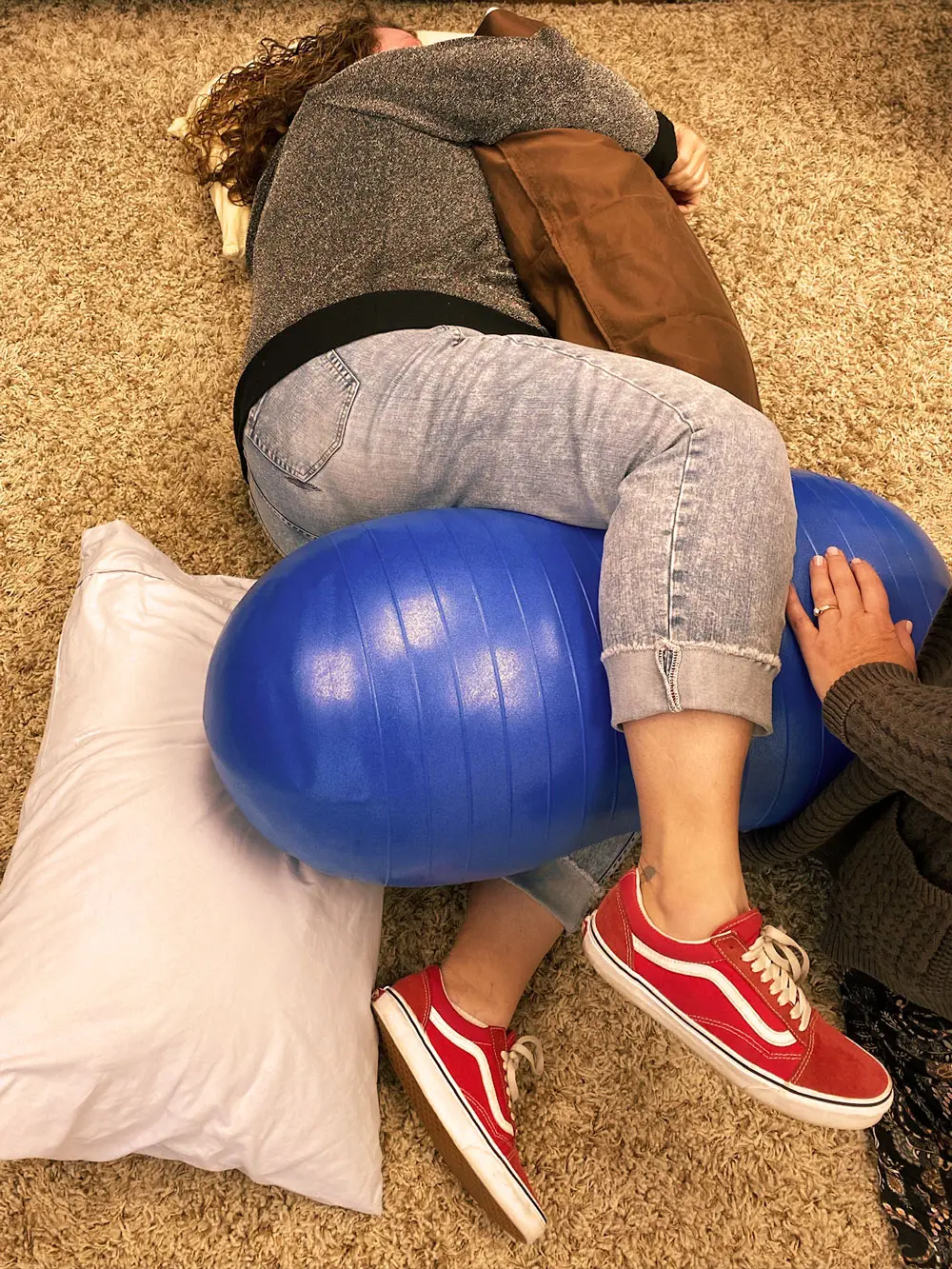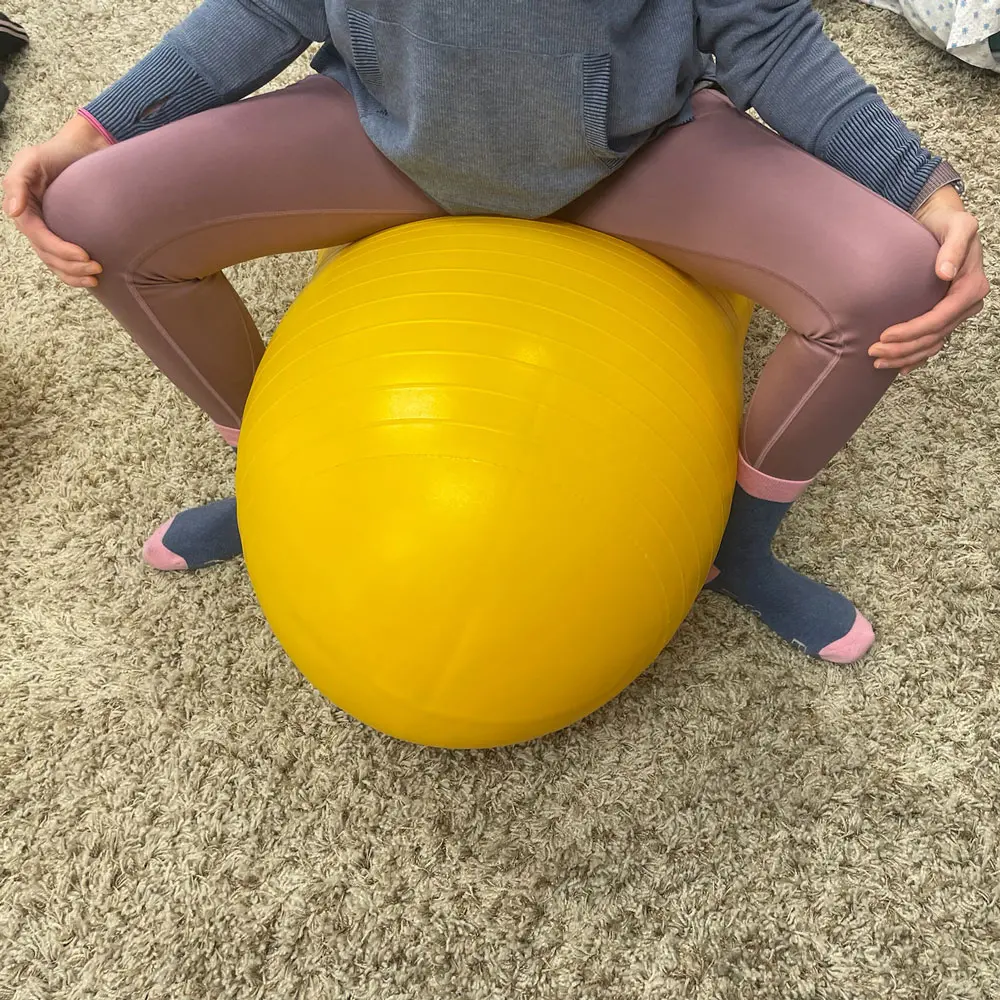
Do you know all the ways a peanut ball can be used during labor?
You may already know that a peanut ball can be used during labor to help open up the pelvis and make things more comfortable for your clients. It’s also a versatile tool that can be used to encourage a better birthing position.
During your peanut ball training with Heather, you will learn at least 10 peanut ball positions. She will show you how to use these positions to help your client both prior and during labor. Important details such as picking the correct size peanut ball, selecting the appropriate peanut ball positions, determining a baby’s station and contraindications are also covered during this class.
You can apply this knowledge to improve your skills as a doula and introduce a valuable tool during labor.
Earn DONA Continuing Education Units (CEUs)
You can learn peanut ball skills to better serve your clients and earn contact hours for recertification.
Both the Basic (4hrs) and Advanced (7hrs) Peanut Ball Training classes are approved by DONA International for CEUs.
What does a Peanut Ball do?
- Pelvis Opening: Placing the peanut ball between a laboring woman’s legs helps open the pelvis outlet.
- Facilitates Descent: It aids the baby’s descent into the pelvis, promoting a smoother birthing process.
- Mid-Pelvic Rotation: The peanut ball encourages the baby to rotate in the mid-pelvis, optimizing the birthing position.
- Shortens Labor: By supporting these movements, it may contribute to shorter and faster labor experiences.
- Reduces Cesarean Rates: One of peanut ball’s notable benefits is the potential to lower Cesarean rates, making it a valuable tool during labor.
How does a Peanut Ball Work?
Peanut balls are a versatile tool during labor. They are suitable for use with or without an epidural.
During labor, placing the peanut ball between a person’s legs opens the pelvis outlet, promoting relaxation. It also aids the descent of the baby into the pelvis, facilitates rotation in the mid-pelvis, resulting in a potentially shorter and faster labor.
A significant benefit is their potential to reduce Cesarean births. It’s a practical tool with tangible outcomes in the birthing process. If you have more questions or need details, feel free to ask.
2025 Training Dates: Jul, 20; Nov. 16
Time: 1pm-5pm
Duration: 4 hrs
DONA International CEUs: 4 hrs
Max Class Size: 10 people
Materials (Included): Reminder handout
Materials (optional purchase): Peanut Ball book and Laminated cards
Skills Covered:
- Learn the top 10 positions for laboring with or without an epidural.
- Contraindications
- Size Matters! What size(s) are right for you?
- What’s babies station? And why should I want to know?
- Which positions for each stage of labor?
- Which position can I do prenatally to help baby engage into the pelvis?
- Care and storage your peanut ball
Dates: Coming Soon!
Time: TBD
Duration: 7 hrs
DONA International CEUs: 7 hrs
Max Class Size: 10 people
Materials (Included): Reminder handout, Skills checklist, and Peanut Ball book
Materials (optional purchase):Laminated cards
Skills Covered:
- Learn the top 30 positions for laboring with or without an epidural.
- Contraindications
- Size Matters! What size(s) are right for you?
- What’s babies station? And why should I want to know?
- Which positions for each stage of labor?
- Which position can I do prenatally to help baby engage into the pelvis?
- Pre and Post test (DONA CEUs pending)
- Care and storage your peanut ball

Peanut Ball Training Materials
Although purchase of the Peanut Ball Book and laminated cards are not required for your peanut ball training, they can be invaluable reference during labor.
Please purchase the Peanut Ball materials prior to training if you would like to use your own supplies during your class with Heather.
Peanut Ball Book*
The Peanut Ball Book is 224 pages with over 200 pictures. It contains information on over 50 peanut ball positions including optimal times to use each of them. With this book, you can review how to safely and effectively use peanut balls at any time.
*The Peanut Ball Book is included when you sign up for Advanced Peanut Ball Training.
Laminated Cards
This a set of 5 charts that includes pictures representing 7 different positions using the peanut ball along with a short description of each. The charts are printed on 8×10 cardstock. Images on the chart demonstrate positions with and without the epidural.
Charts also include clear instructions about cleaning, covering, and choosing the correct size for your clients.










